Iran has one of the planet’s most varied climates, ranging from semiarid to arid, subtropical to arctic, snowy mountains and areas in the northwest and west, to torrid deserts in the center and east. Iran has four distinct seasons and a lot to offer all year round.
The Iranian plateau’s natural attractions may be explored in great detail in Iran’s deserts. Deserts are inspiring landscapes filled with light, space, and possibilities. The most well-liked adventure traveler activities are Iran desert excursions because of this!
The purpose of this page is to arm readers with all the knowledge they need to explore wonderful and surreal Iran deserts.
Where Are the Most Famous Deserts of Iran?
The huge, scorching, and desolate Iran deserts are often impossible to reach. The TAPPersia team has provided a selection of desert locations for you to explore.
1.Lut Desert (Kavir-e Lut)
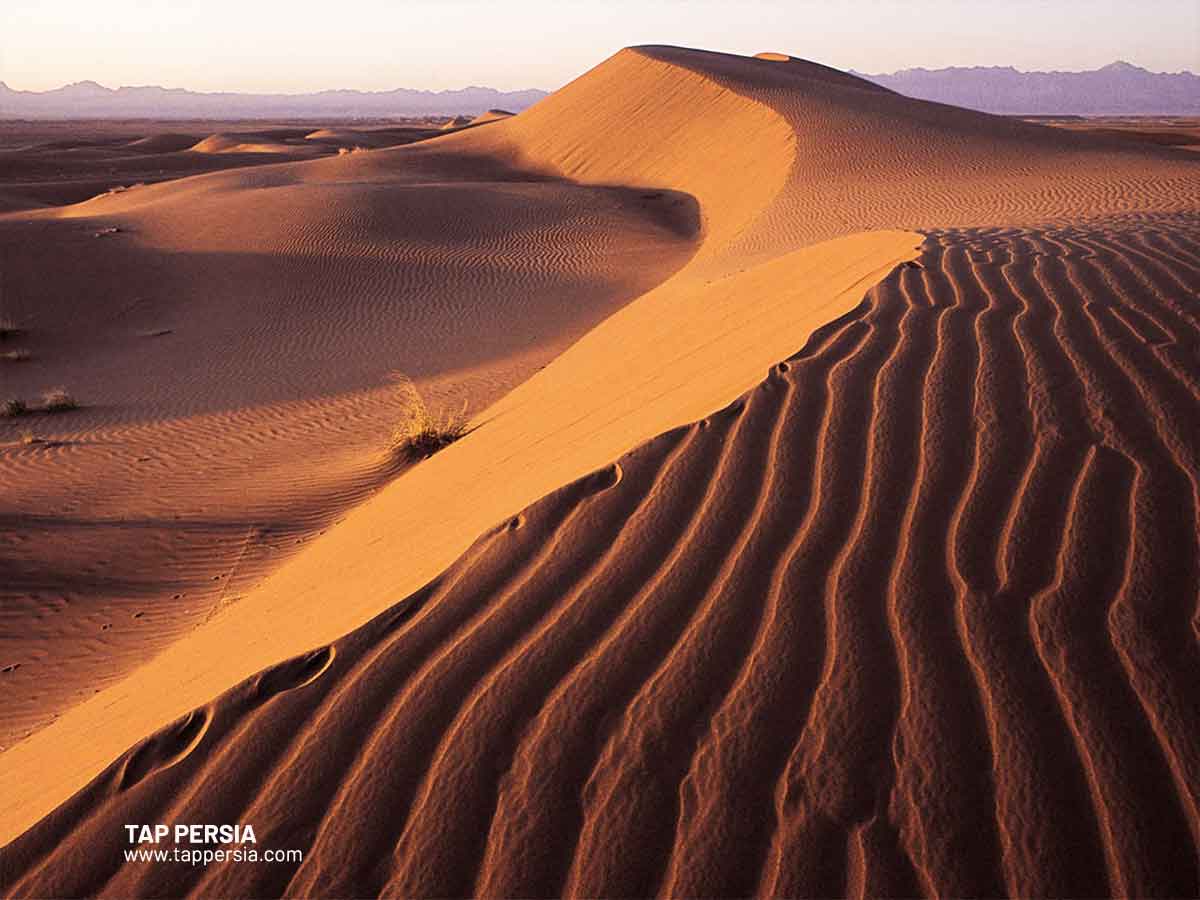
The Kavir-e Lut, or little desert, is one of the main Iran deserts. Furthermore, it is known as Dasht-e Lut. The desert, which lies in the eastern portion of Iran, is roughly 160 km (100 miles) broad and encompasses an area of 51,800 km2; it extends for 320 km (200 miles) from northwest to southeast (20,000 mile2).
A total of two distinct portions make up this incredible desert. The wind has carved a series of parallel ridges and furrows out of the center area, while salt flats cover a low plateau in the eastern section.
Kavir-e Lut is the only Iranian desert that has been included in UNESCO’s World Heritage List. This Iran desert was included on the list for two different reasons. First off, the Lut Desert, an internationally known classic hot desert terrain, protects one of the hottest regions on earth. The property is also a unique illustration of continuing geological processes including erosional and depositional characteristics in a scorching desert.
2.Kavir Desert
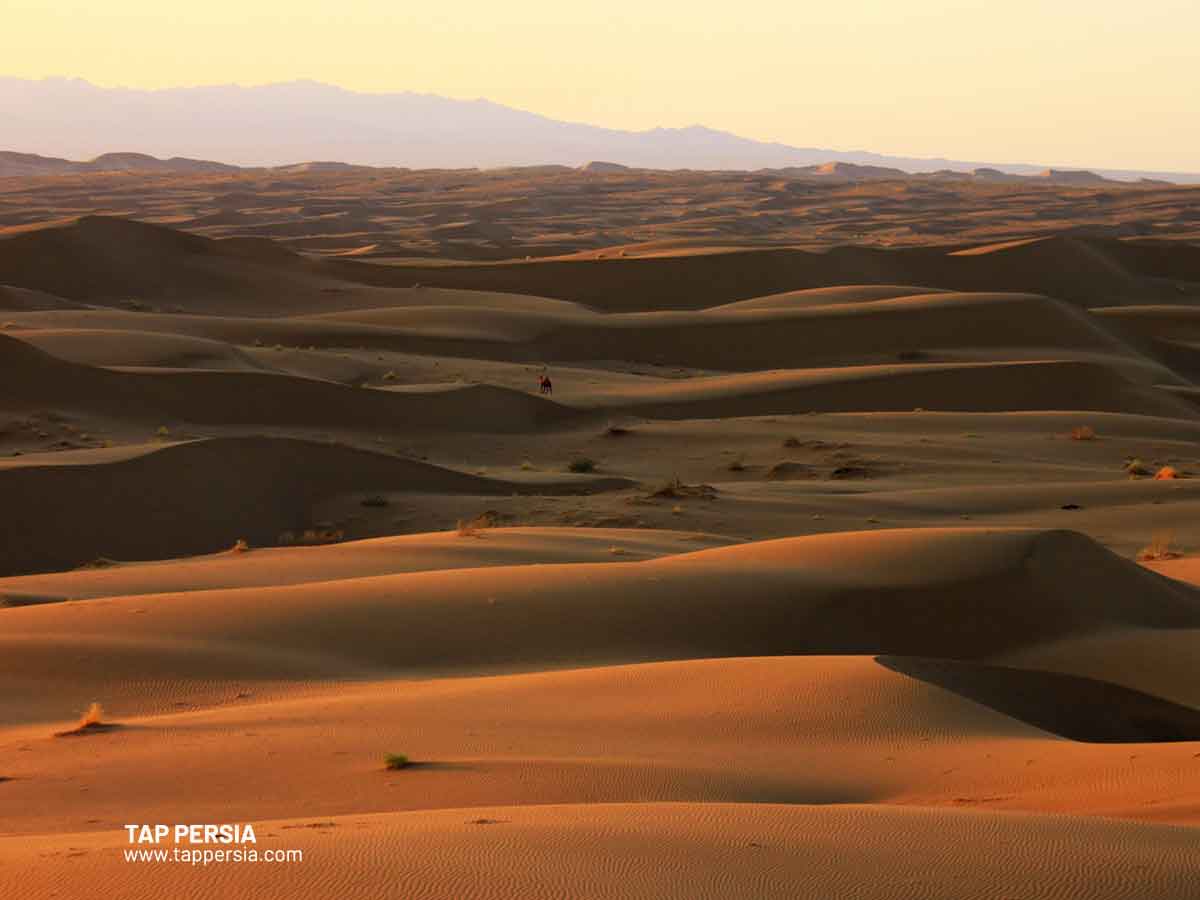
The Kavir Desert is located in the center of Iran and abuts Tehran, Semnan, Isfahan and Qom. It is one of the broadest salty regions on earth. The deepest area of the Iranian plateau is this desert, which rises more than 400 meters.
One of the major geological gaps is the desert. This Iranian desert has consistently windy, strong storms and salty sands in the 40-meter-high hills. Nearby Kavir Desert, which is 300 kilometers (200 miles) away, appears to have been completely dry since the beginning of time. However, this desert tells a tale of wetter periods to geologists with trained eyes.
A sizable portion of the desert is encircled by Salt Lake, a white salt marsh that casts beautiful shadows in the light. Many migrating birds may be seen living in the water that flows into this saline lake throughout the winter.
The Eyn-o-Rashid caravanserai, Tang-e-Zolamat, Ghaleh Sefi-Ab, the Hoz-Gheyloleh cistern and the Bandeh-Ali wetland are further tourist attractions in this desert. It should be mentioned that in order to visit the Iranian desert, you must follow certain safety precautions and hire a qualified local guide.
3.Mesr Desert
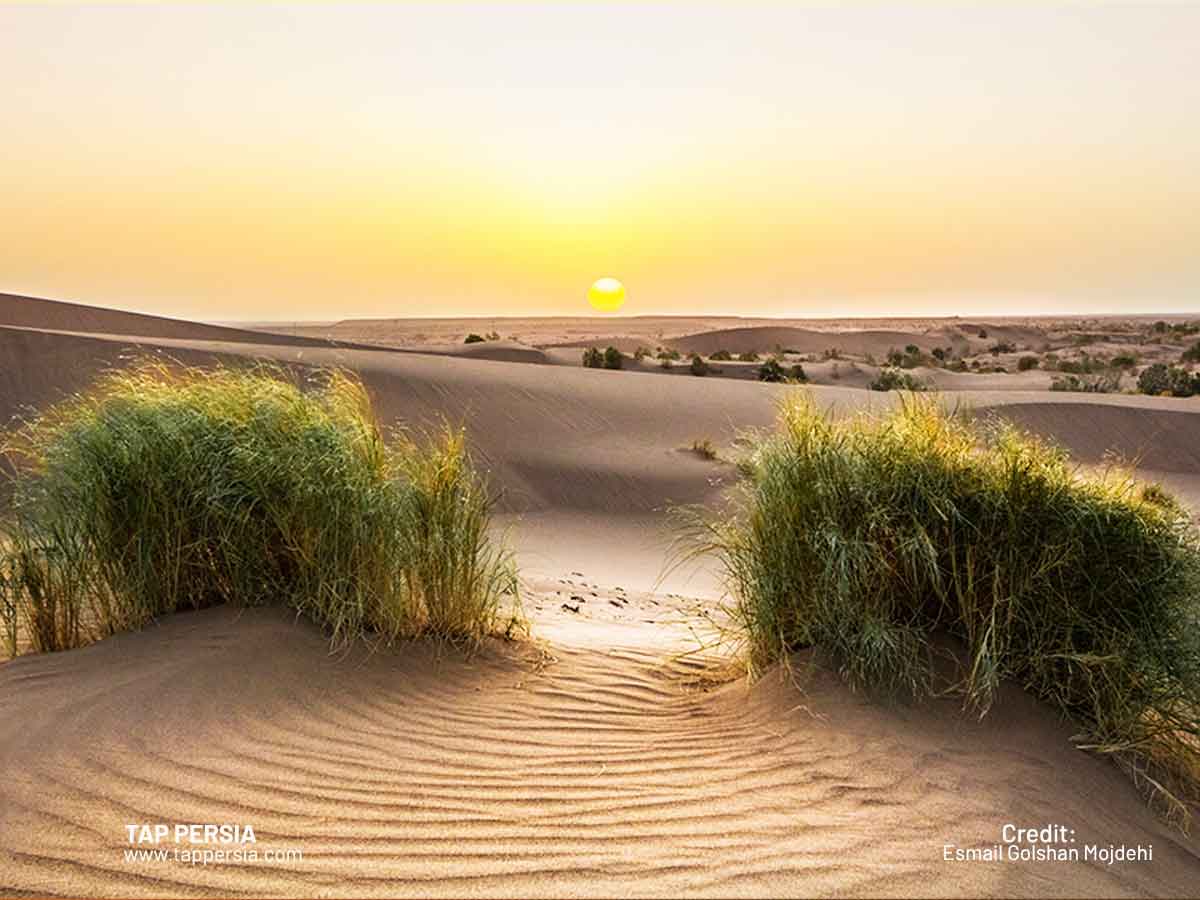
One of the most beautiful Iran deserts that the country has welcomed into its country is the Mesr Desert. It is located in Isfahan Province. A community with the same name sits close to the desert, which is situated 55 kilometers from the city of Khor in the province of Isfahan. Everyone wants to embark on a magnificent adventure amid the dunes because of the beauty that binds the earth to the sky in this specific area.
In these communities, the stunning palm palms, plants, and sandhills have produced breathtaking beauty. For this trip, thousands of people set out to explore the mysteries hidden under the Mesr desert’s sand dunes. The desert boasts excellent recreational amenities that give you a unique experience, such as camels, motorbikes, and safari, making it one of the great Iran deserts. One of the fascinating features of this place is the sandhills around the settlement of Mesr, where the wind has sculpted odd and alluring forms.
Visit the adjacent Mesr Village, which includes a beautiful building that has been adapted to the area’s dry conditions. One well-known aspect of the hamlet is the sparkling night that emerges as soon as the sun’s final rays sink into the dunes. People can clearly view the vastness of the night sky as they are either seated around a fire in the middle of the desert or on the rooftops of the old homes in the hamlet. Keep your cameras handy, and don’t miss the beautiful desert vistas.
When you interact with the residents, you will learn the legend behind the name of this location, which describes how Joseph, the man who dug the town’s wells, saved many lives. They referred to their community as Mesr because they thought that what Joseph did to their town was identical to what Joseph the prophet accomplished to Mesr (the Arabic word for Egypt). Maziar Al Davoud House is a possible place to stay while seeing the Mesr Desert.
The architect Maziar Al Davood renovated his family home with the help of his French wife and turned it into a campground. Along with the Mesr hamlet, there are numerous other tiny settlements in this Iranian desert, including Farahzad, Amirabad and Garmeh.
4.Shahdad Kalut Desert, Kalout, Kalot
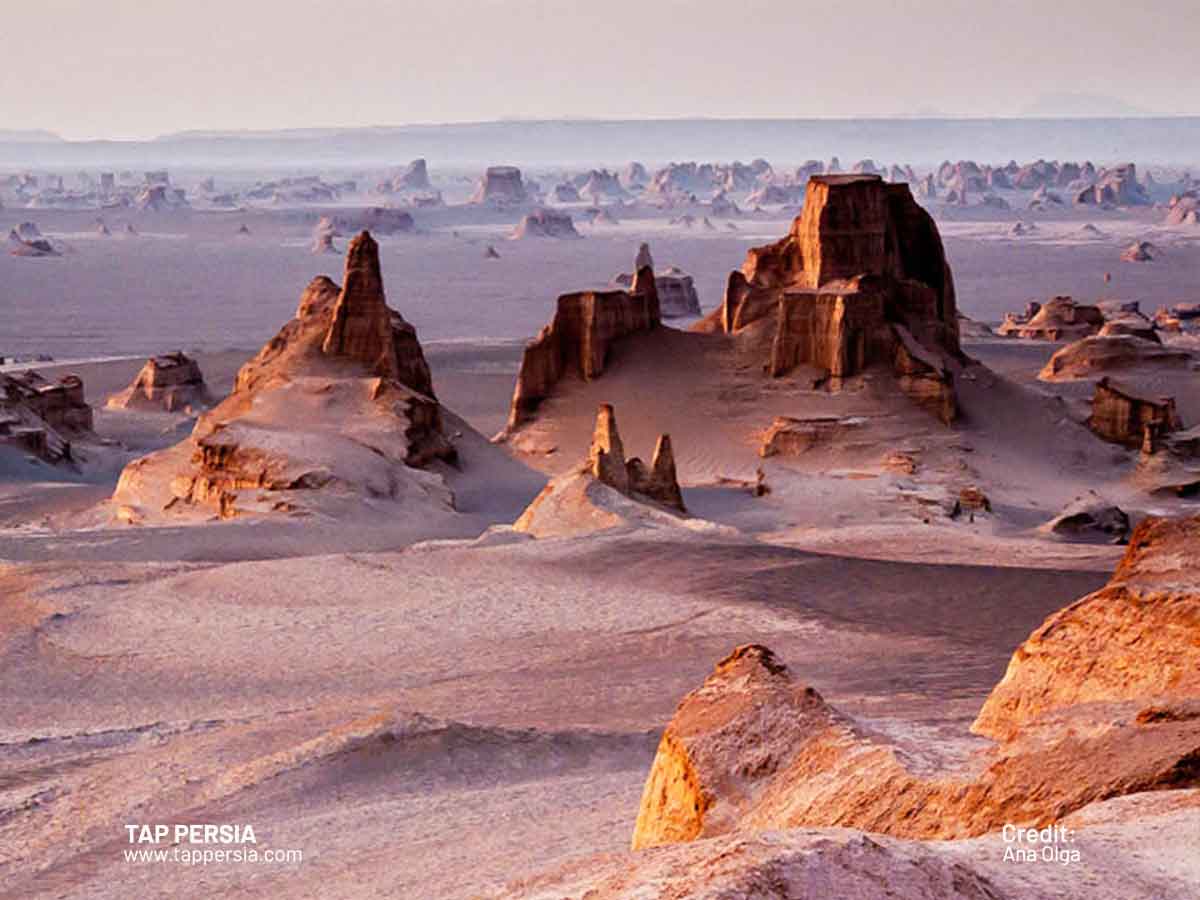
The Shahdad desert in Kerman, the hottest area on earth, is one of the most beautiful deserts in the world and attracts many tourists each year. Kerman is located 100 kilometers from the Desert of Shahdad, which is located 30 kilometers from the Dasht-e Lut. Due to its erosion issues, this area is also known as the “Imaginary Desert City.” Large and stunning clusters have been formed by aquatic wind erosion.
It was chosen by National Geographic Magazine a few years ago as the world’s fourth top natural attraction. You may visit the renowned Kalouts, which are the desert’s indigenous sandcastles, at Shahdad Desert. You may walk straight through the sand buildings in the desert, which serves as their scenery. A sense of tranquility permeates the area as the rocks rise like castles from the beach. Two meters above sea level is where the Shahdad Desert is located. The sand is soft because of the dampness in these arid regions.
According to Lecturer Parviz Kordvani, a desertologist and professor at the University of Tehran, the Shahdad Desert is the hottest place on Earth. The soil genus in this region is identical to other farmed soils. Strong winds are blamed for the absence of flora in the desert of Shahdad because they uproot any plants at their roots.
Summertime travel to this site is challenging due to the high temperatures. So fall is the ideal time to see these extraordinary natural occurrences. Due to the extreme temperatures, visiting this place in the summer is difficult. The best time of year to see these extraordinary natural occurrences in this Iranian desert is in the fall.
5.Maranjab Desert
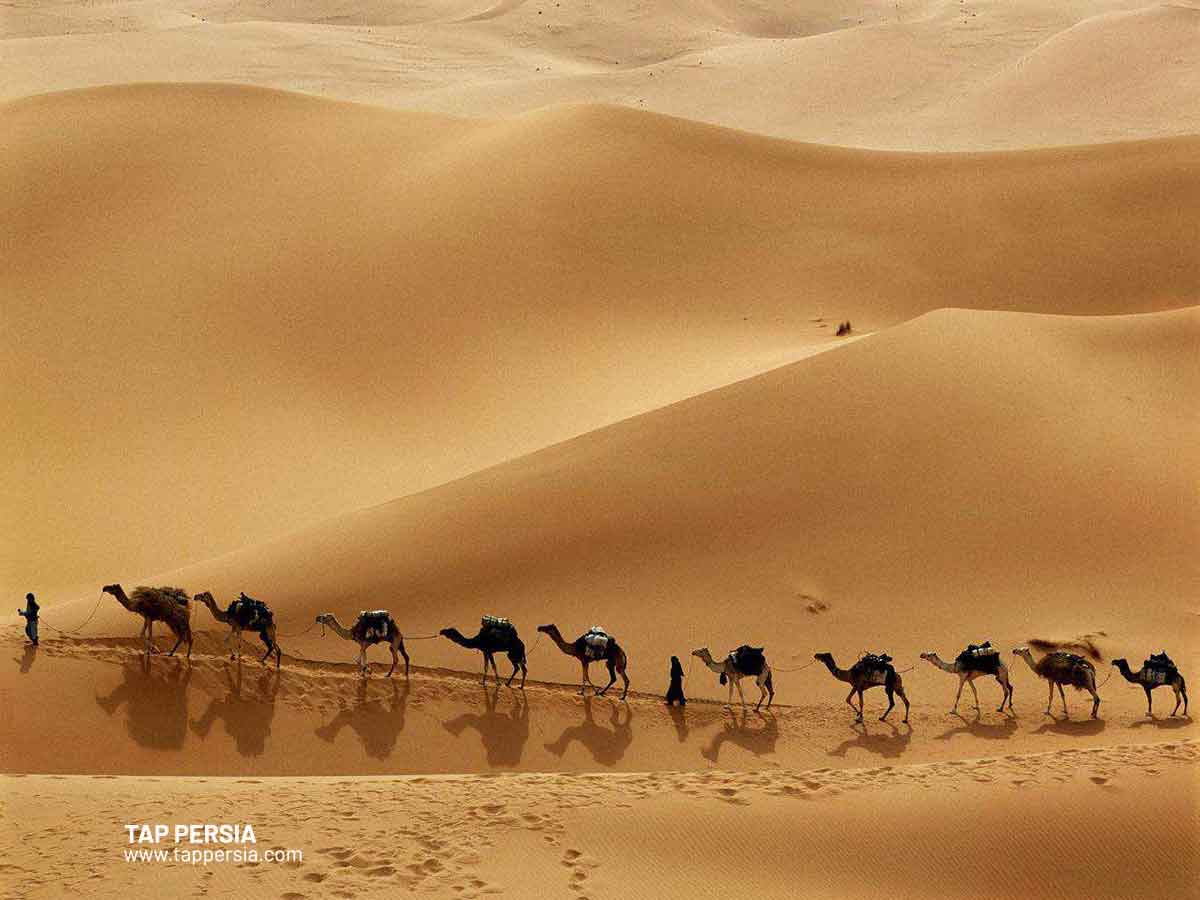
This desert, which is found in the province of Isfahan’s Aran Va Bidgol, is a true synthesis of the desert, environment, and history. You must pass through Aran and Bidgol, a tiny town adjacent to Kashan, in order to reach this desert.
One of the greatest locations for off-road enthusiasts is the Maranjab desert. Salt Lake lies to the north, Desert National Park and Band-e Rig to the east, Hoz-e Sultan, Moreh Lakes and Masileh Desert to the west, and finally Aran and Bidgol to the south, encircling it. Long sand-covered hills, arching forests, salt lakes, sabulos, and an exquisitely gorgeous night sky cover the majority of the desert.
The desert may be one of the nicest Iran deserts because of its peace, quiet and stunning night sky. One of this desert’s biggest attractions is salt lake, as was already noted. The lake is about 2 cm deep during the month of rain, but following exposure to sunlight, it soon evaporates.
By visiting here, you may also visit the Maranjab Caravanserai and take advantage of its relaxing traditional chambers, which were constructed along the Silk Road that linked the towns of Esfahan, Khorasan and Ray.
6.Varzaneh Desert
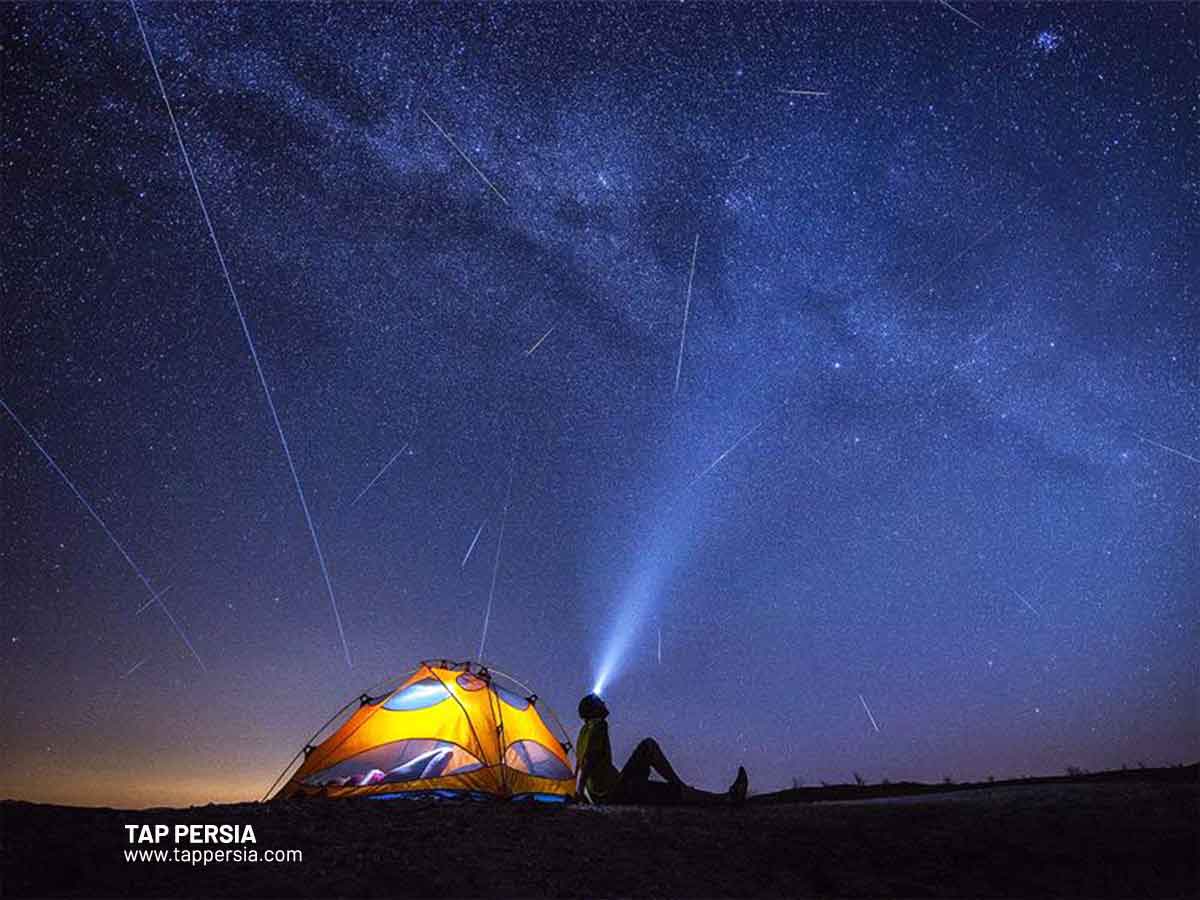
The Varzaneh Desert in the Isfahan area is the most open desert, and it is undisputed that there is an unmatched variety of sand dunes in all forms and sandy landscapes above the slopes of the sand. You may find out a lot more fascinating things in this desert, and it’s a great place to see the stars at night. The sky is majestic at night, with stars shooting. In the Varzaneh Desert, riding an SUV or a camel is a lot of fun, but you can still hear the wind echoes by simply strolling on the soft sand. The crystals on the side of Varzaneh Salt Lake will become more and more visible as you proceed.
One of Varzaneh’s most distinctive natural features is the aquatic environment of the Gavkhuni global wetland, which is surrounded by drylands. In the middle of Iran’s desert, the wetland of Gavkhuni is like a diamond. This desert also houses some of Iran’s national and historical landmarks, such as the more than 1100-year-old Ghurtan Citadel and Varzaneh Bridge. Additionally, the Varzaneh desert is home to Iran’s largest desert entertainment complex, which offers a variety of services.
7.Rig-e Jenn Desert
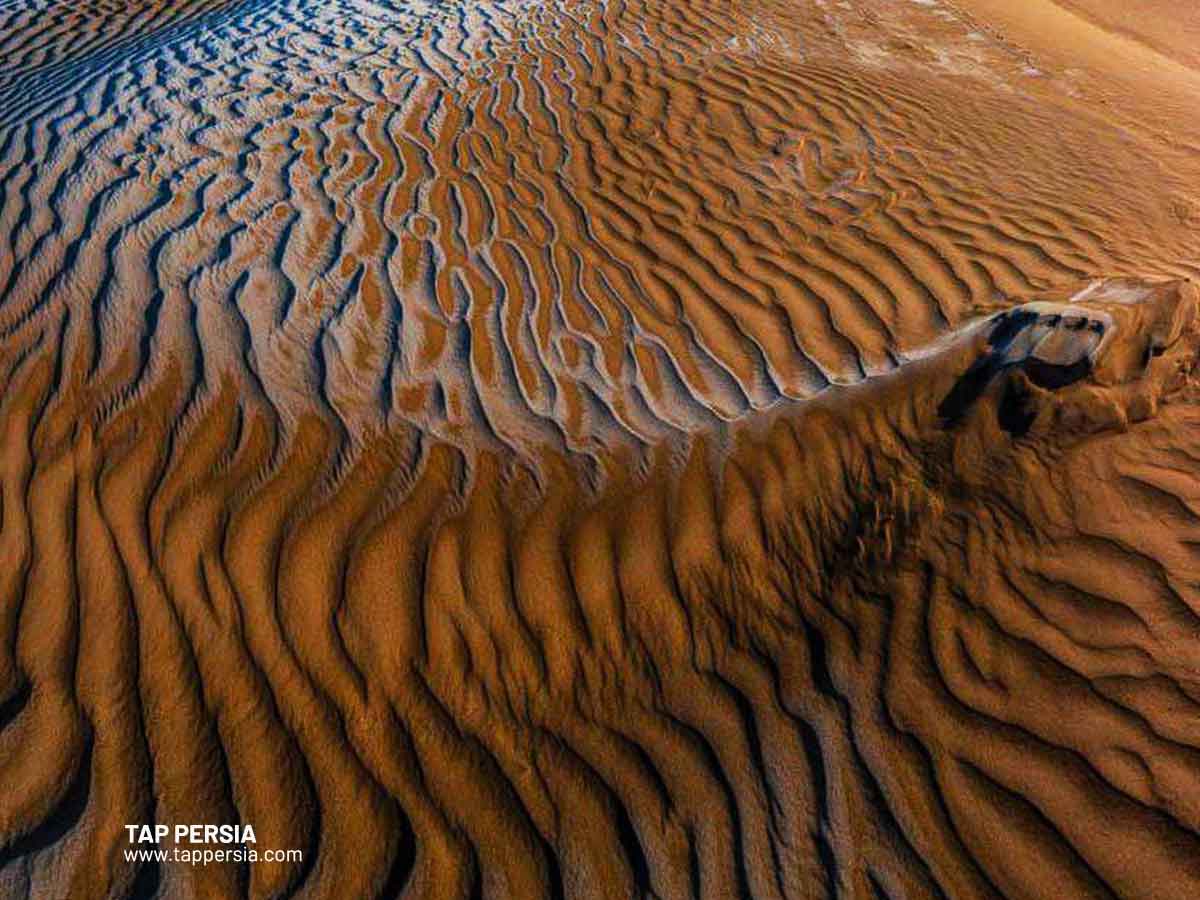
The roughly 4,500 square kilometer Rig-e Jenn Desert, or “Dune of the Jinn,” is situated south of Semnan and southeast of Garmsar City and is the third major sand region in Iran. The third-largest hamada in the world is the Rig-e Jenn Desert (gravel land).
The hitherto unattainable ambition of visiting the Rig-e Jenn area has become a reality. Today, a variety of groups and tours visit the area with their vehicles and enough equipment in order to make lifelong memories while traveling through this breathtaking area.
Consider this gorgeous desert if you’re interested in desert trekking and hiking in this area and you want to get a natural adrenaline high. You should be aware that it is one of those Iran deserts that calls for specialized equipment and a qualified guide.
8.Karakal Desert
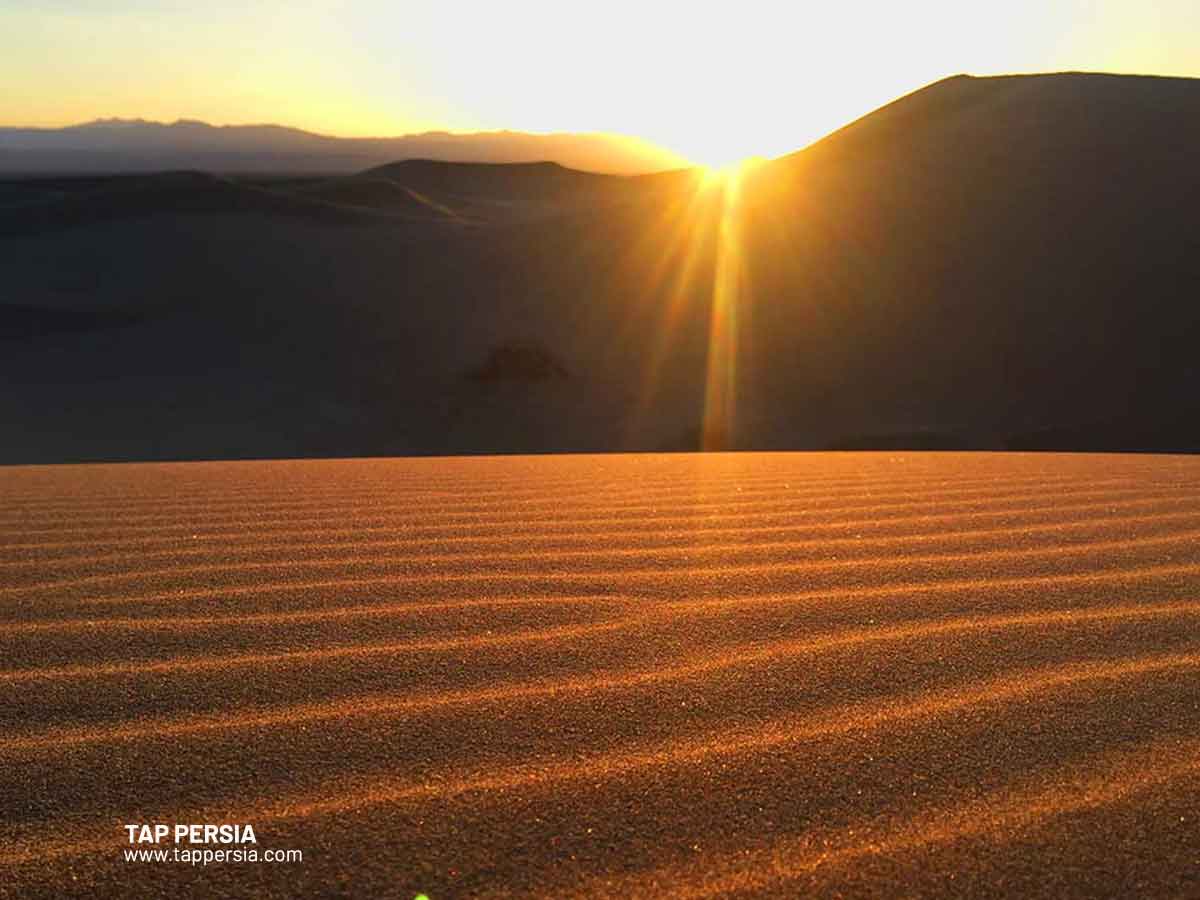
Near Sadeqabad Village in the city of Bafq, one of the best Iran deserts called the Karakal Desert is situated 750 kilometers from Tehran. Your initial thought may be to inquire as to the meaning of the term “Caracal” and the significance of the name given to this desert.
The answer to this question is that the word “Caracal” refers to a cat that resides in this area; in reality, this area serves as the habitat of this species, which is why this area is known as the “Caracal or Karakal Desert.” Traveling from Tehran via the towns of Qom, Kashan, Yazd, Bafq, and then the village of Sadeqabad will transport you to this stunning desert in Yazd Province.
Any tourist approaching Sadeqabad Village would immediately see Bagherabad Castle, which was constructed during the Qajar dynasty on Abd al-Rahim Khan Bafqi’s instructions. At one time, the castle served as a bastion for the defense of Sadeqabad Village. The most stunning desert in Yazd province is KaraKal Desert.
Iran’s desert region of Yazd is home to a number of deserts. Tourists frequently advise visiting the stunning KaraKal Desert in addition to taking in the region’s ancient history if Yazd Province, with its distinctive and exquisite historic monuments, is one of your objectives.
9.Darak Desert
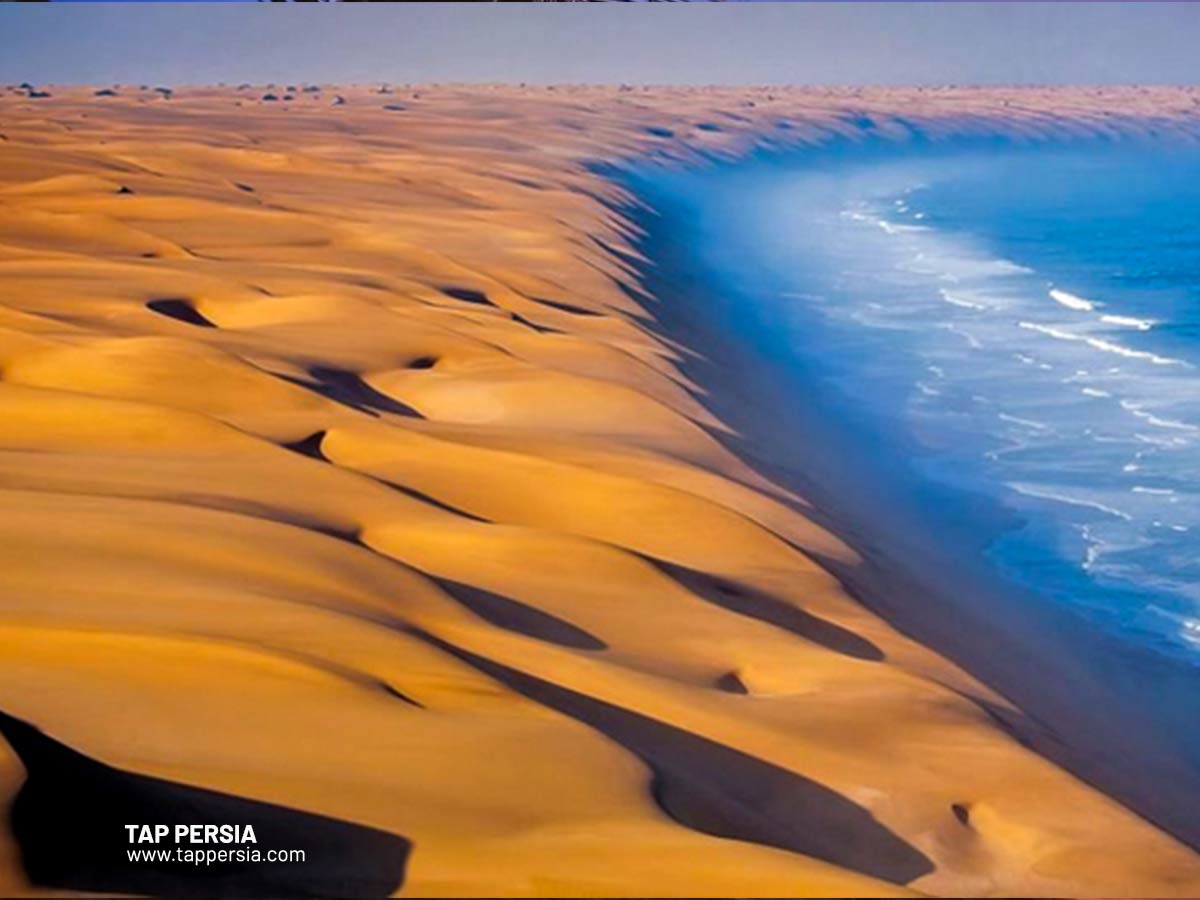
Due to the exact location where the desert and sea meet, the Darak Desert offers one of the most spectacular locations. Due to its peculiarity, the Darak Desert, which is next to a hamlet with the same name, is one of Iran’s cleanest beaches.
Additionally, it is immaculate since few tourists are familiar with this location. As a result, strolling among sand dunes while listening to the sound of the ocean might be an unforgettable experience. One of the many marvels of this area of land is where the desert and the sea meet. The turquoise waters of the Sea and the Ocean mix at this point of open water, and along the coast, producing a magnificent panorama. This desert is located where the Indian Ocean and the Sea of Oman converge.
The Darak Desert is situated in the Sistan and Baluchestan Province, halfway between Bandar Abbas and Chabahar, two of Iran’s major ports. In addition, the word Darak means “dwelling by the sea” in the native tongue. Furthermore, March is the greatest month to visit this region due to the colorful plankton that line the coastlines, which makes for a spectacular picture.
Additionally, Darak Village, which borders the Darak Desert, is situated along the coast of Makran, in the Konarak County, 170 kilometers west of Chabahar and 120 kilometers from Konarak. This idyllic town has close-by rocky, sandy, and coral shorelines that all contribute to the region’s appeal. Pure and fresh water wells, located adjacent to the salty sea and causing an amazing phenomena, are one of the numerous wonders of the Darak Village.
It is important to highlight that recreational facilities are offered for water sports, such as surfing, boating, and swimming, as well as for activities connected to desert excursions, such as stargazing and desert hiking.
10.Khara Desert
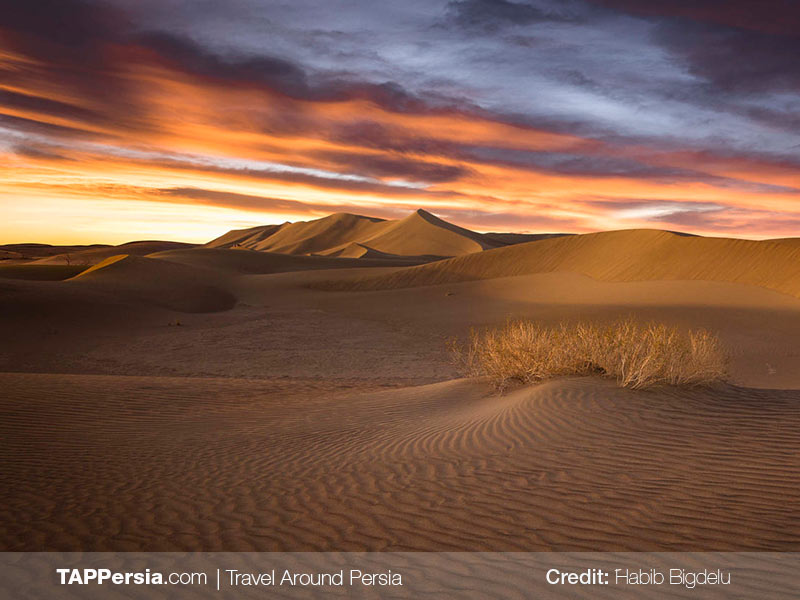
Khara Desert, a hidden gem among Iran’s vast and diverse landscapes, is yet another testament to the country’s rich natural beauty. Located in the province of Isfahan, the Khara Desert, also known as Kavir-e Khara, is a unique blend of tranquility and ruggedness that leaves an indelible mark on its visitors. The desert’s vast expanse of golden sands, punctuated by occasional vegetation, presents a mesmerizing sight, especially during sunrise and sunset when the sun paints the sky in hues of orange and red.
The Khara Desert is not just a barren landscape; it is a living testament to the resilience of nature. Despite the harsh conditions, several species of plants and animals have made this desert their home, adding to its unique biodiversity. The desert’s sand dunes, shaped by the wind into beautiful patterns, are a sight to behold. The silence of the desert is occasionally broken by the rustling of the wind, creating a symphony that resonates with the soul. A visit to the Khara Desert is not just a journey through a physical landscape, but also an exploration of inner peace and solitude. Remember to bring your camera along to capture the stunning vistas that this desert offers. As with all desert excursions, it’s recommended to have a knowledgeable local guide to ensure a safe and enriching experience.
What is needed to visit Deserts in Iran?
Most of Iran deserts are located a long way from major cities. Even though most of them are close to small villages, towns, and desert camps, make sure to pack your supplies. For hot days and cold nights, wear appropriate footwear, sun protection, sunglasses, and clothing (depending on the season). If you don’t want to bring heavy items with you, you may buy or even rent camping equipment in practically all of Iran’s major cities. You’re going to have a fantastic time in the desert, so pack your cameras, the right lenses, and a tripod for taking nighttime photos.
One of Iran’s most stunning natural attractions is its deserts. However, a tranquil, relaxing excursion in the desert might quickly become one that could be fatal. Therefore, we strongly advise that you book knowledgeable local guides and drivers for your desert travels.
Is It Hard to Visit Iran’s Deserts?
Only those who have visited the stunning deserts of Iran can truly understand how amazing it is. It may be challenging to see these magnificent sights, therefore, it’s crucial to pick a guide that can be of great assistance to you. TAPPersia is prepared to assist you with that because of this. The Tap Persia staff can arrange the greatest desert excursions for you, ensuring that you have no problems along the road. You are welcome to contact them via their live chat or WhatsApp.
How Many Deserts are in Iran?
In the nation, there are two major Iran deserts and several minor ones.
Are There Deserts in Iran?
Yes, deserts cover around 22% of Iran’s land area.
What are Iran’s 2 Deserts?
Dasht-e Kavir and the Lut Desert are the only two significant Iran deserts.



Comment (0)